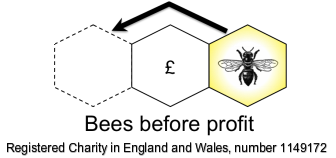Beekeeping methods
Current beekeeping methods are compounding the stresses placed on the honey bee. Issues include;
Bees Before Profit are committed to developing methods of beekeeping which ensure the health of the bee is paramount. We are establishing means of identifying and breeding native honeybees, which we know are better suited to our climate and require less "management" than non-native species.
We aim to provide research apiaries to prove our methods, through unbiased research, in association with tertiary education establishments such as the University of Exeter.
- Physical bee size has been artificialy increased by 15% in the quest for a greater honey harvest.
- The use of worker cell foundation inhibits the creation of healthy males (drones) and therefore productive queens.
- The reduction in productive queens has led to the mass importation of non-native bees, along with associated pests and diseases.
- Chemicals to counteract non-native pests and diseases are frequently placed in the hive.
- Frequent feeding of sugar water, a poor substitute for nectar, is encouraged.
- Bees and hives are frequently transported from one area to another, greatly increasing the stresses on the colony.
Bees Before Profit are committed to developing methods of beekeeping which ensure the health of the bee is paramount. We are establishing means of identifying and breeding native honeybees, which we know are better suited to our climate and require less "management" than non-native species.
We aim to provide research apiaries to prove our methods, through unbiased research, in association with tertiary education establishments such as the University of Exeter.

